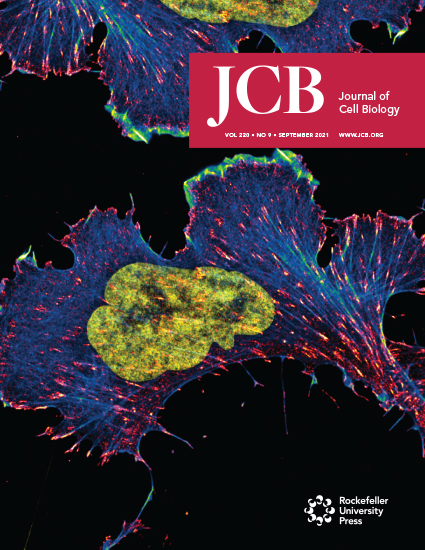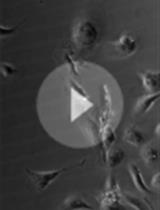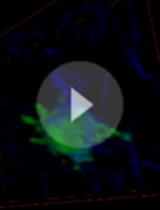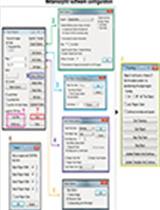- EN - English
- CN - 中文
Image-based Quantification of Macropinocytosis Using Dextran Uptake into Cultured Cells
基于图像定量使用葡聚糖摄取到培养细胞中的巨胞饮
发布: 2022年04月05日第12卷第7期 DOI: 10.21769/BioProtoc.4367 浏览次数: 4026
评审: David PaulGuillaume BompardKristina Y. AguileraAnonymous reviewer(s)
Abstract
Macropinocytosis is an evolutionarily conserved process, which is characterized by the formation of membrane ruffles and the uptake of extracellular fluid. We recently demonstrated a role for CYFIP-related Rac1 Interactor (CYRI) proteins in macropinocytosis. High-molecular weight dextran (70kDa or higher) has generally been used as a marker for macropinocytosis because it is too large to fit in smaller endocytic vesicles, such as those of clathrin or caveolin-mediated endocytosis. Through the use of an image-based dextran uptake assay, we showed that cells lacking CYRI proteins internalise less dextran compared to their wild-type counterparts. Here, we will describe a step-by-step experimentation procedure to detect internalised dextran in cultured cells, and an image pipeline to analyse the acquired images, using the open-access software ImageJ/Fiji. This protocol is detailed yet simple and easily adaptable to different treatment conditions, and the analysis can also be automated for improved processing speed.
Keywords: Macropinocytosis (巨胞饮)Background
Cell migration is one of the many fundamental processes that occur during normal development and physiology (Theveneau and Mayor, 2013; Krause and Gautreau, 2014). Central to this process is the main plasma membrane branched actin generating module, comprising of four main components: the small GTPase protein Rac1 (Machacek et al., 2009), the Scar/WAVE complex (Davidson and Insall, 2011; Krause and Gautreau, 2014), the Arp2/3 complex (Goley and Welch, 2006), and actin. When cells receive a stimulus, such as a growth factor or chemo-attractant, these molecules and complexes work together to nucleate the branched actin network and push the plasma membrane forward, promoting cell migration. Interestingly, macropinocytosis (Swanson and Watts, 1995; Bloomfield and Kay, 2016), an evolutionarily conserved endocytic process, shares the same molecular machinery as cell migration. However, instead of pushing in the plane of the front-rear axis of the cell, local actin polymerisation pushes plasma membrane sheets forward or upward, to form cup-like structures that resolve into macropinocytic vesicles taken into the cell. Cells use macropinocytosis not only to uptake nutrients but also to traffic and organize different membrane receptors, such as integrins, to modulate their adhesion and invasion in cancer (Le et al., 2021).
In our recent paper published in the Journal of Cell Biology (Le et al., 2021), we utilised an image-based internalisation assay, to show that cells lacking CYFIP-related Rac1 Interactor (CYRI) proteins displayed a reduced macropinocytic uptake of dextran 70 kDa.
In this Bio-Protocol article, we describe a step-by-step protocol to detect and quantify the amount of dextran uptake in cultured adherent cells. The wet lab procedure is inspired by Commisso (Commisso et al., 2014), with modifications to simplify the method. We tried different types of dextran, including dextran tetramethylrhodamine (TMR) (Invitrogen, #D1818), dextran Texas Red (Invitrogen, #D1830), and dextran Fluorescein (Invitrogen, #D1822). We found only the last type resulted in clean and analysable data without the need for excessive washing, while both the dextran TMR and dextran Texas Red resulted in a high background with visible clumps of protein, even after multiple washes. We also omit the overnight starving steps, as we found that they were not essential and made no difference to the outcome, using our conditions and cells. This significantly reduced the length of time required for the assay. Since the method described here has been used quite commonly and successfully in the literature before, we focus more on simplifying the experimentation steps and improving the automation capability in the quantification step. We provide the full macro script that can be directly copied and pasted into your Macro window in ImageJ/Fiji (Schindelin et al., 2012). We also provide comments to explain in simple terms what each command in the script does, which could be very useful for those who have no background in coding, or who have just started their journey in programming. We believe this is something that is still missing in the current literature, where there are a lot of resources for image analysis, but many are not necessarily accessible or presented in understandable terms for everyone, particularly beginners. The image analysis pipeline presented here is also suitable for analysing any other intracellular signal, including but not limited to integrin internalisation (Le et al., 2021), transferrin, and other endocytic processes.
Materials and Reagents
Cell culture
Aluminium foil
Parafilm
Paper towel or absorbent tissue
pH test strips, pH-Fix 0–14 PT, fixed indicator (Macherey-Nagel, catalog number: 92111) (optional)
12-well culture plate (Falcon, catalog number: 353043)
15-cm tissue culture dish with grid (Fisher Scientific, FalconTM 353025, catalog number: 10314601)
15-mL conical tubes (Fisher Scientific, FalconTM 352196, catalog number: 11507411)
19-mm glass coverslips (VWR, catalog number: 631-0156)
COS-7 cells (ATCC, catalog number: CRL-1651)
DMEM (Gibco, catalog number: 21969-035), store at 4°C
L-Glutamine (Gibco, catalog number: 25030-032), store at 4°C
2.5% Trypsin, no phenol red (Gibco, catalog number: 15090046), store at 4°C
Penicillin-Streptomycin (LifeTechnologies, catalog number: 15140122), store at 4°C
Fetal Bovine Serum (FBS) (Gibco, catalog number: 10270-106), store at 4°C
PE buffer (see Recipes, store at room temperature)
Chemicals
Fibronectin, Bovine Plasma (Sigma-Aldrich, catalog number: F1141), store at 4°C
16% paraformaldehyde (Electron Microscopy Sciences, catalog number: 15710), store at room temperature
ProLong Diamond antifade mounting medium (Invitrogen, catalog number: P36961), store at -20°C
Hoechst 33342 (Thermo Scientific, catalog number: 62249), store at 4°C
Dextran, Fluorescein, 70,000 MW, Anionic, Lysine Fixable (Invitrogen, catalog number: D1822), store at 4°C, avoid direct light exposure (see Procedure A)
70% Nitric acid (Sigma-Aldrich, catalog number: 225711), store at room temperature
Ethanol ≥99.8%, (absolute alcohol, without additive) (Sigma-Aldrich, catalog number: 51976), store at room temperature
EDTA (Fisher Scientific, catalog number: 10289410)
Distilled water
PBS buffer tablets (Fisher Scientific, catalog number: 10209252), store at room temperature
PBS buffer (see Recipes)
PE buffer (see Recipes)
Growing DMEM medium (see Recipes)
Serum-free DMEM medium (see Recipes)
4% PFA solution (see Recipes)
Equipment
Small metal tweezers
A homemade incubating chamber
Haemocytometer or cell counter
Software
Zeiss LSM 710 confocal microscope system (or any other common confocal system if available)
ImageJ or Fiji v2.3.0/1.53m
GraphPad Prism 7
Procedure
文章信息
版权信息
© 2022 The Authors; exclusive licensee Bio-protocol LLC.
如何引用
Readers should cite both the Bio-protocol article and the original research article where this protocol was used:
- Le, A. H. and Machesky, L. M. (2022). Image-based Quantification of Macropinocytosis Using Dextran Uptake into Cultured Cells. Bio-protocol 12(7): e4367. DOI: 10.21769/BioProtoc.4367.
- Le, A. H., Yelland, T., Paul, N. R., Fort, L., Nikolaou, S., Ismail, S. and Machesky, L. M. (2021). CYRI-A limits invasive migration through macropinosome formation and integrin uptake regulation. J Cell Biol 220(9): e202012114.
分类
癌症生物学 > 侵袭和转移 > 细胞生物学试验 > 细胞迁移
细胞生物学 > 细胞新陈代谢 > 其它化合物
您对这篇实验方法有问题吗?
在此处发布您的问题,我们将邀请本文作者来回答。同时,我们会将您的问题发布到Bio-protocol Exchange,以便寻求社区成员的帮助。
提问指南
+ 问题描述
写下详细的问题描述,包括所有有助于他人回答您问题的信息(例如实验过程、条件和相关图像等)。
Share
Bluesky
X
Copy link












